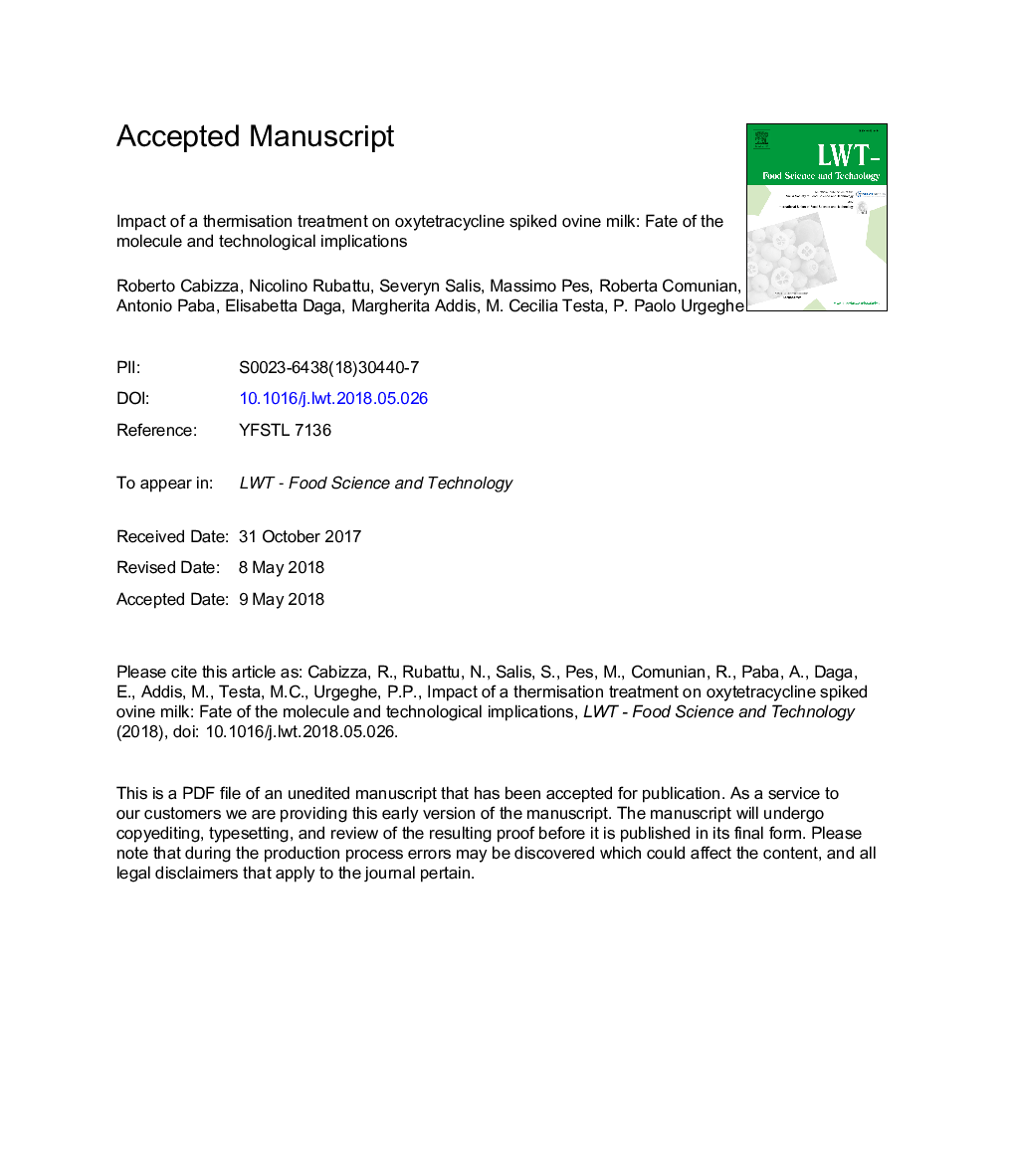| Article ID | Journal | Published Year | Pages | File Type |
|---|---|---|---|---|
| 8890449 | LWT - Food Science and Technology | 2018 | 29 Pages |
Abstract
A few studies have been published on the distribution of oxytetracyline (OTC) residues present in milk among cheese, whey, and milk protein fractions, throughout cheese-making, most of them, focused on the effect of pasteurization and Ultra High Temperature (UHT) treatments, and carried out on cow milk. This study aimed to investigate the impact of a thermisation treatment of ovine milk spiked with oxytetracycline at MRL (maximum residue limit) and half MRL, on the fate of the molecule, and the effect of OTC residues on starter culture development and cheese composition. The antibiotic recovery and partition from milk into whey and cheese were assessed by liquid chromatography-high resolution mass spectrometry (LC-HRMS). Starter and non-starter microflora development was monitored by viable plate counts. Milk thermisation did not affect OTC recovery, partition and cheese chemical composition. On a dry matter basis, an OTC reduction between 15 and 19% was calculated in 60-day cheese, at MRL and half MRL, respectively. OTC caused a dose-dependent difference in the time required to reach pH 5.60, which was significantly higher (Pâ¯<â¯0.05) at MRL level compared to half MRL and control, allowing coliform bacteria to reach 6 log CFU gâ1 in 1-day MRL OTC cheeses.
Related Topics
Life Sciences
Agricultural and Biological Sciences
Food Science
Authors
Roberto Cabizza, Nicolino Rubattu, Severyn Salis, Massimo Pes, Roberta Comunian, Antonio Paba, Elisabetta Daga, Margherita Addis, M. Cecilia Testa, P. Paolo Urgeghe,
